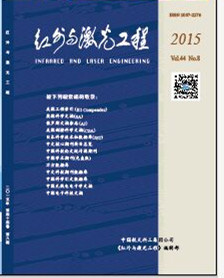Zhang Wei, Guo Xin, You Suping, Yang Bo, Wan Xinjun. Computer simulation for hybrid plenoptic camera super-resolution refocusing with focused and unfocused mode[J]. Infrared and Laser Engineering, 2015, 44(11): 3384-3392.
| Citation:
|
Zhang Wei, Guo Xin, You Suping, Yang Bo, Wan Xinjun. Computer simulation for hybrid plenoptic camera super-resolution refocusing with focused and unfocused mode[J]. Infrared and Laser Engineering, 2015, 44(11): 3384-3392.
|
Computer simulation for hybrid plenoptic camera super-resolution refocusing with focused and unfocused mode
- 1.
Engineering Research Center of Optical Instrument and System,Ministry of Education,Shanghai Key Lab of Modern Optical System,School of Optical-Electrical and Computer Engineering,University of Shanghai for Science and Technology,Shanghai 200093,China;
- 2.
State Key Laboratory of Transient Optics and Photonics,Chinese Academy of Sciences,Xi'an 710119,China
- Received Date: 2015-03-14
- Rev Recd Date:
2015-04-19
- Publish Date:
2015-11-25
-
Abstract
Light field is a representation of full four-dimensional radiance of rays in free space. Plenoptic camera is a kind of system which could obtain light field image. In typical plenoptic camera, the final spatial resolution of the image is limited by the numbers of the microlens of the array. The focused plenoptic camera could capture a light field with higher spatial resolution than the traditional approach, but the directional resolution will be decreased for trading. Two models were set up to emulate the 4D light field distribution in both the traditional plenoptic camera and the focused plenoptic camera respectively. The 4D light field images of the two kinds of plenoptic camera were simulated by the software ZEMAX. The differences of sampling methods of the two kinds of plenoptic camera were analyzed. A variable focal length microlens array was presumed to be used in plenoptic camera to implement both focused and unfocused light field imaging. Based on the recorded light field, the corresponding refocusing process was discussed then. The refocused images at different depth were calculated. A new method of enhancing the resolution of the refocused images by image fusion and super resolution theories was presented. A reconstructed all in-focus image with resolution of 3 times of traditional plenoptic camera and same depth of field was achieved finally.
-
References
|
[1]
|
Ng R. Digital lightfield photography[D]. CA, USA: Stanford University, 2006. |
|
[2]
|
Adelson T, Wang J. Single lens stereo with a plenoptic camera [J]. IEEE, 1992, 14(2): 99-106. |
|
[3]
|
Ng R. Fourier slice photography [J]. ACM Transactions on Graphics, 2005, 24(3): 735-744. |
|
[4]
|
Lumsdaine A, Georgiev T. The focused plenoptic camera [J]. Computational Photography(ICCP), IEEE, 2009: 1-8. |
|
[5]
|
Georgiev T, Lumsdaine A. Focused plenoptic camera and rendering[J]. Journal of Electronic Imaging, 2010, 19(2): 021106. |
|
[6]
|
Lumsdaineand A, Georgiev T. Full resolution light field rendering [R]. USA: Adobe Systems, 2008. |
|
[7]
|
Georgiev T, Zheng K, Curless B, et al. Spatio-angular resolution trade off in integral photography [R]. Eurographics Symposium on Rendering, 2006. |
|
[8]
|
Kuiper S, Hendriks B H W. Variable-focus lens for miniature cameras[J]. Appl Phys Letter, 2004, 85(7): 100-109. |
|
[9]
|
Lee S W, Lee S S. Focal tunable liquid lens integrated with an electromagnetic actuator[J]. Appl Phys Letter, 2007, 90(12): 121129-121131. |
|
[10]
|
Ren H, Wu S. Variable-focus liquid lens by changing aperture[J]. Appl Phys Letter, 2005, 86(21): 211107-211109. |
|
[11]
|
Binh-Khiem N, Matsumoto K, Shimoyamaa I. Polymer thin film deposited on liquid for varifocal encapsulated liquid lenses[J]. Appl Phys Letter, 2008, 93(12): 124101-124103. |
|
[12]
|
Agarwala A, Dontcheva A, Agrawala M, et al. Interactive digital photomontage[J]. ACM Transactions on Graphics, 2004, 23(3): 294-302. |
|
[13]
|
Mendlovic D. Toward a super imaging system[J].Applied Optics, 2013, 52(4): 561-566. |
|
[14]
|
Park S C, Park M K, Kang M G. Super-resolution image reconstruction: A technical overview[J]. IEEE Signal Processing Magazine, 2003, 20(3): 21-36. |
-
-
Proportional views

-









 DownLoad:
DownLoad: